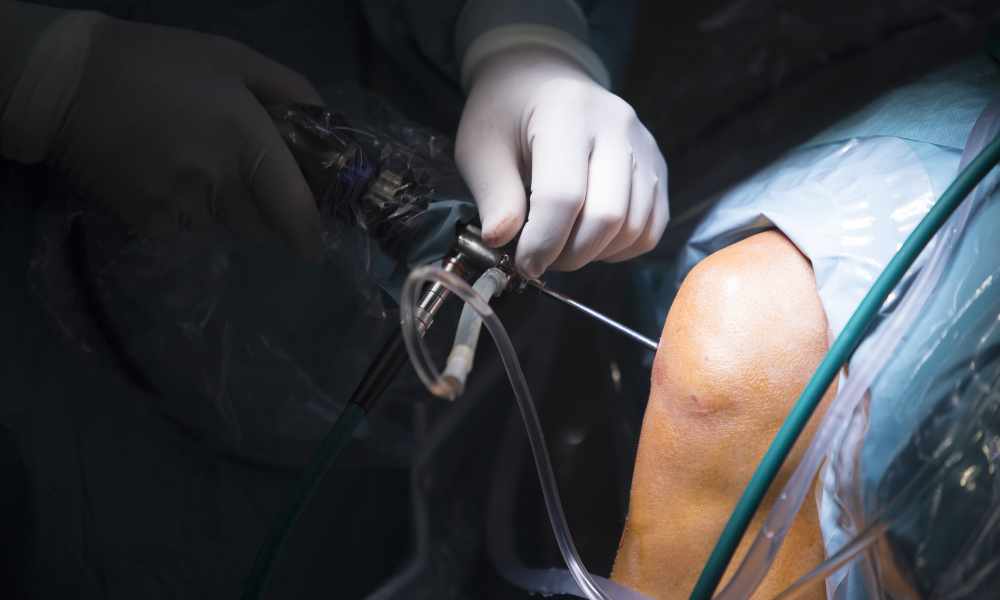
Who is an Arthroscopy Surgeon?
An arthroscopy surgeon is a medical professional who employs a fiber-optic camera to identify and address issues related to joints. This specialist introduces a slender tube connected to a fiber-optic video camera through a small incision, approximately the size of a buttonhole. The internal view of the joint is relayed to a high-definition video monitor.
Arthroscopy enables the surgeon to visualize the interior of the joint without the necessity of a large incision. Furthermore, it is possible for surgeons to address certain types of joint injuries during the procedure, utilizing slender surgical instruments that are introduced through additional minor incisions.
What Conditions Do Arthroscopy Surgeons Treat?
Arthroscopy surgeons address various conditions impacting the joints, including those of the shoulder, knee, elbow, wrist, ankle, and hip. The conditions they treat encompass:
- Inflammation: In the interior of the joint, including areas such as the knee, shoulder, elbow, wrist, or ankle.
- Cartilage damage: Examples include tears, damage, or deterioration.
- Ligament tears: The anterior cruciate ligament (ACL) and the posterior cruciate ligament (PCL) are examples found in the knee.
- Tendon damage: Rotator cuff tendon injuries in the shoulder.
- Loose bone or cartilage: In the knee, shoulder, elbow, ankle, or wrist joints.
- Arthritis: This encompasses inflammatory disorders such as lupus.
- Impingement syndrome: Compression of tendons in the shoulder
- Recurrent dislocations: Located on the shoulder.
When Should You Consult an Arthroscopy Surgeon?
Consult your physician if you experience any of the following symptoms following your surgery:
- Elevated body temperature.
- Discomfort continues despite treatment.
- Presence of discolored or malodorous fluid surrounding the injury.
- Experiencing tingling or loss of sensation.
- Heightened levels of inflammation.
How to Choose the Best Arthroscopy Surgeon?
An arthroscopy surgeon is a medical professional who focuses on diagnosing and treating issues related to bones, joints, and connective tissues, thereby helping to preserve a healthy musculoskeletal system. To ensure you select the most suitable physician, consider the following helpful recommendations.
- Request Guidance from a Medical Expert
- Evaluate the Doctor’s Area of Expertise and Subspecialties
- Investigate the Quality and Resources of the Hospital
- Select an Orthopedic Surgeon Who Prioritizes Patient Care
What to Expect During an Arthroscopy Procedure?
A cuff-like apparatus may be applied around your thigh to assist in managing bleeding during the procedure. The surgeon will create two or three small incisions around your knee. Saline fluid will be introduced into your knee to facilitate its inflation. A slender tube equipped with a miniature camera will be inserted through one of the incisions. This camera is connected to a video monitor, allowing the surgeon to visualize the interior of the knee.
The surgeon may introduce additional small surgical instruments into your knee through the other incisions. Subsequently, the surgeon will address the issue by either repairing or removing the problematic area within your knee. Upon completion of the surgery, the saline will be evacuated from your knee. The surgeon will then close the incisions using sutures and apply a dressing over them. It is common for surgeons to capture images of the procedure from the video monitor, which you may have the opportunity to view after the operation to understand the interventions performed.
Benefits of Arthroscopic Surgery
Less swelling and inflammation: An arthroscopic procedure involves making small incisions, in contrast to ‘open’ surgery, which necessitates larger openings in the skin. This approach minimizes the exposure of soft tissue to trauma, resulting in reduced swelling, inflammation, and pain compared to traditional open surgery.
Faster healing: You will experience smaller wounds as opposed to larger ones. In certain instances, one to two days post-surgery, you may find it possible to take off the bandages and protect the incisions with small sterilized adhesive strips.
Lower risk of complications: Prior to the advent of arthroscopy, surgical interventions on joints necessitated extensive exposure of the joint throughout the operation, thereby elevating the risk of infection. This method also heightened the likelihood of arthrofibrosis, a condition characterized by the formation of scar tissue as a reaction to surgical trauma. Such scar tissue can limit the range of motion and result in pain during the movement of the affected tissue or joint.
Better return to function: Prior to the advent of arthroscopic surgery, joint injuries frequently resulted in the premature conclusion of a professional athlete’s career. In contrast, contemporary patients typically resume their athletic activities following a period of recovery.
Outpatient surgical setting: Numerous arthroscopic procedures can be performed in an outpatient environment, typically at a surgical center, although they may occasionally take place in the surgeon’s office. These alternatives are significantly more economical for both the healthcare system and the patient compared to undergoing surgery in a hospital. In contrast, open surgery nearly always necessitates a hospital setting.
Quicker recovery time: Arthroscopic surgery offers a faster recovery compared to open surgery. The removal of bandages occurs earlier, the healing of incisions is expedited, and if necessary, physical therapy can commence sooner. Consequently, you will be able to resume work and your daily activities much more rapidly than with open surgical procedures.
Dr. Abhinav Kesarkar is a highly qualified orthopedic surgeon adept at treating patients across all age groups. His areas of expertise include hip replacement, knee replacement, knee arthroscopy, and hip arthroscopy, among others. Utilizing advanced techniques, he is equipped to address a wide range of orthopedic concerns, ensuring optimal outcomes for his patients. He is dedicated to providing compassionate care with a focus on the patient’s needs. Entrust us with the health of your bones, joints, and soft tissues.